Editor’s note: The following is excerpted from Beacon Lights of History, by John Lord (published 1902)
Michelangelo Buonarroti – one of the Great Lights of the new civilization – may stand as the most fitting representative of reviving art in Europe; also as an illustrious example of those virtues which dignify intellectual pre-eminence. He was superior, in all that is sterling and grand in character, to any man of his age, certainly in Italy; exhibiting a rugged, stern greatness which reminds us of Dante, and of other great benefactors; nurtured in the school of sorrow and disappointment, leading a checkered life, doomed to envy, ingratitude, and neglect; rarely understood, and never fully appreciated even by those who employed and honored him. He was an isolated man; grave, abstracted, lonely, yet not unhappy, since his world was that of glorious and exalting ideas, even those of grace, beauty, majesty, and harmony,–the world which Plato lived in, and in which all great men live who seek to rise above the transient, the false, and puerile in common life. He was also an original genius, remarkable in everything he attempted, whether as sculptor, painter, or architect, and even as poet. He saw the archetypes of everything beautiful and grand, which are invisible except to those who are almost divinely gifted; and he had the practical skill to embody them in permanent forms, so that all ages may study those forms, and rise through them to the realms in which his soul lived.
Michelangelo not only created, but he reproduced. He reproduced the glories of Grecian and Roman art. He restored the old civilization in his pictures, his statues, and his grand edifices. He revived a taste for what is imperishable in antiquity. As such he is justly regarded as an immortal benefactor; for it is art which gives to nations culture, refinement, and the enjoyment of the beautiful. Art diverts the mind from low and commonplace pursuits, exalts the imagination, and makes its votary indifferent to the evils of life. It raises the soul into regions of peace and bliss.
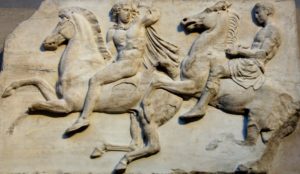
But art is most ennobling when it is inspired by lofty and consecrated sentiments, like those of religion, patriotism, and love. Now ancient art was consecrated to Paganism. Of course there were noble exceptions; but as a general rule temples were erected in honor of heathen deities. Statues represented mere physical strength and beauty and grace. Pictures portrayed the charms of an unsanctified humanity. Hence ancient art did very little to arrest human degeneracy; facilitated rather than retarded the ruin of states and empires, since it did not stimulate the virtues on which the strength of man is based: it did not check those depraved tastes and habits which are based on egotism.
Now the restorers of ancient art cannot be said to have contributed to the moral elevation of the new races, unless they avoided the sensualism of Greece and Rome, and appealed purely to those eternal ideas which the human mind, even under Pagan influences, sometimes conceived, and which do not conflict with Christianity itself.
In considering the life and labors of Michelangelo, then, we are to examine whether, in the classical glories of antiquity which he substituted for the Gothic and Mediaeval, he advanced civilization in the noblest sense; and moreover, whether he carried art to a higher degree than was ever attained by the Greeks and Romans, and hence became a benefactor of the world.
In considering these points I shall not attempt a minute criticism of his works. I can only seize on the great outlines, the salient points of those productions which have given him immortality. No lecture can be exhaustive. If it only prove suggestive, it has reached its end.
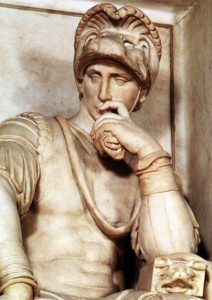
Michelangelo stands out in history in the three aspects of sculptor, painter, and architect; and that too in a country devoted to art, and in an age when Italy won all her modern glories, arising from the matchless works which that age produced. Indeed, those works will probably never be surpassed, since all the energies of a great nation were concentrated upon their production, even as our own age confines itself chiefly to mechanical inventions and scientific research and speculation. What railroads and telegraphs and spindles and chemical tests and compounds are to us; what philosophy was to the Greeks; what government and jurisprudence were to the Romans; what cathedrals and metaphysical subtleties were to the Middle Ages; what theological inquiries were to the divines of the seventeenth century; what social urbanities and refinements were to the French in the eighteenth century, the fine arts were to the Italians in the sixteenth century: a fact too commonplace to dwell upon, and which will be conceded when we bear in mind that no age has been distinguished for everything, and that nations can try satisfactorily but one experiment at a time, and are not likely to repeat it with the same enthusiasm. As the mind is unbounded in its capacities, and our world affords inexhaustible fields of enterprise, the progress of the race is to be seen in the new developments which successively appear, but in which only a certain limit has thus far been reached. Not in absolute perfection in any particular sphere is this progress seen, but rather in the variety of the experiments. It may be doubted whether any Grecian edifice will ever surpass the Parthenon in beauty of proportion or fitness of ornament; or any nude statue show grace of form more impressive than the Venus de Milo or the Apollo Belvedere; or any system of jurisprudence be more completely codified than that systematized by Justinian; or any Gothic church rival the lofty expression of Cologne cathedral; or any painting surpass the holy serenity and ethereal love depicted in Raphael’s madonnas; or any court witness such a brilliant assemblage of wits and beauties as met at Versailles to render homage to Louis XIV; or any theological discussion excite such a national interest as when Luther confronted Doctor Eck in the great hall of the Electoral Palace at Leipsic; or any theatrical excitement such as was produced on cultivated intellects when Garrick and Siddons represented the sublime conceptions of the myriad-minded Shakspeare. These glories may reappear, but never will they shine as they did before. No more Olympian games, no more Roman triumphs, no more Dodona oracles, no more Flavian amphitheatres, no more Mediaeval cathedrals, no more councils of Nice or Trent, no more spectacles of kings holding the stirrups of popes, no more Fields of the Cloth of Gold, no more reigns of court mistresses in such palaces as Versailles and Fontainbleau,–ah! I wish I could add, no more such battlefields as Marengo and Waterloo,–only copies and imitations of these, and without the older charm. The world is moving on and perpetually changing, nor can we tell what new vanity will next arise, vanity or glory, according to our varying notions of the dignity and destiny of man. We may predict that it will not be any mechanical improvement, for ere long the limit will be reached, and it will be reached when the great mass cannot find work to do, for the everlasting destiny of man is toil and labor. But it will be some sublime wonders of which we cannot now conceive, and which in time will pass away for other wonders and novelties, until the great circle is completed; and all human experiments shall verify the moral wisdom of the eternal revelation. Then all that man has done, all that man can do, in his own boastful thought, will be seen, in the light of the celestial verities, to be indeed a vanity and a failure, not of human ingenuity and power, but to realize the happiness which is only promised as the result of supernatural, not mortal, strength, yet which the soul in its restless aspirations never ceases its efforts to secure, everlasting Babel-building to reach the unattainable on earth.
Now the revival of art in Italy was one of the great movements in the series of human development. It peculiarly characterized the fifteenth and sixteenth centuries. It was an age of artistic wonders, of great creations.
Italy, especially, was glorious when Michelangelo was born, 1474; when the rest of Europe was comparatively rude, and when no great works in art, in poetry, in history, or philosophy had yet appeared. He was descended from an illustrious family, and was destined to one of the learned professions; but he could not give up his mind to anything but drawing,–as annoying to his father as Galileo’s experiments were to his parent; as unmeaning to him as Gibbon’s History was to George III,–“Scribble, scribble, scribble; Mr. Gibbon, I perceive, sir, you are always a-scribbling.” No perception of a new power, no sympathy with the abandonment to a specialty not indorsed by fashions and traditions, but without which abandonment genius cannot easily be developed. At last the father yielded, and the son was apprenticed to a painter, a degradation in the eyes of Mediaeval aristocracy.
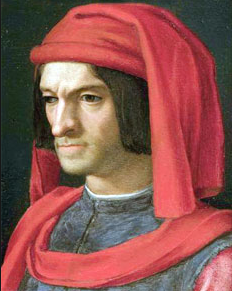
The celebrated Lorenzo de Medici was then in the height of power and fame in Florence, adored by Roscoe as the patron of artists and poets, although he subverted the liberties of his country. This over-lauded prince, heir of the fortunes of a great family of merchants, wishing to establish a school for sculpture, filled a garden with statues, and freely admitted to it young scholars in art. Michael Angelo was one of the most frequent and enthusiastic visitors to this garden, where in due time he attracted the attention of the magnificent Lord of Florence by a head chiselled so remarkably that he became an inmate of the palace, sat at the table of Lorenzo, and at last was regularly adopted as one of the Prince’s family, with every facility for prosecuting his studies. Before he was eighteen the youth had sculptured the battle of Hercules with the Centaurs, which he would never part with, and which still remains in his family; so well done that he himself, at the age of eighty, regretted that he had not given up his whole life to sculpture.
It was then as a sculptor that Michelangelo first appears to the historical student, about the year 1492, when Columbus was crossing the great unknown ocean to realize his belief in a western passage to India. Thus commercial enterprise began with the revival of art, and was destined never to be separated in its alliance with it, since commerce brings wealth, and wealth seeks to ornament the palaces and gardens which it has created or purchased. The sculptor’s art was not born until piety had already edifices in which to worship God, or pride the monuments in which it sought the glories of a name; but it made rapid progress as wealth increased and taste became refined; as the need was felt for ornaments and symbols to adorn naked walls and empty spaces, especially statuary, grouped or single, of men or animals,–a marble history to interpret or reproduce consecrated associations. Churches might do without them; the glass stained in every color of the rainbow, the altar shining with gold and silver and precious stones, the pillars multiplied and diversified, and rich in foliated circles, mullions, mouldings, groins, and bosses, and bearing aloft the arched and ponderous roof, one scene of dazzling magnificence, these could do without them; but the palaces and halls and houses of the rich required the image of man, and of man not emaciated and worn and monstrous, but of man as he appeared to the classical Greeks, in the perfection of form and physical beauty. So the artists who arose with the revival of commerce, with the multiplication of human wants and the study of antiquity, sought to restore the buried statues with the long-neglected literature and laws. It was in sculptured marbles that enthusiasm was most marked. These were found in abundance in various parts of Italy whenever the vast debris of the ancient magnificence was removed, and were universally admired and prized by popes, cardinals, and princes, and formed the nucleus of great museums.
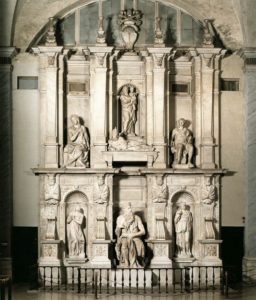
The works of Michelangelo as a sculptor were not numerous, but in sublimity they have never been surpassed, non multa, sed multum. His unfinished monument of Julius II, begun at that pontiff’s request as a mausoleum, is perhaps his greatest work; and the statue of Moses, which formed a part of it, has been admired for three hundred years. In this, as in his other masterpieces, grandeur and majesty are his characteristics. It may have been a reproduction, and yet it is not a copy. He made character and moral force the first consideration, and form subservient to expression. And here he differed, it is said by great critics, from the ancients, who thought more of form than of moral expression,–as may be seen in the faces of the Venus de Medici and the Apollo Belvedere, matchless and inimitable as these statues are in grace and beauty. The Laocooen and the Dying Gladiator are indeed exceptions, for it is character which constitutes their chief merit,–the expression of pain, despair, and agony. But there is almost no intellectual or moral expression in the faces of other famous and remarkable antique statues, only beauty and variety of form, such as Powers exhibited in his Greek Slave, an inferior excellence, since it is much easier to copy the beautiful in the nude statues which people Italy, than to express such intellectual majesty as Michelangelo conceived–that intellectual expression which Story has succeeded in giving to his African Sibyl. Thus while the great artist retained the antique, he superadded a loftiness such as the ancients rarely produced; and sculpture became in his hands, not demoralizing and Pagan, resplendent in sensual charms, but instructive and exalting, instructive for the marvelous display of anatomical knowledge, and exalting from grand conceptions of dignity and power. His knowledge of anatomy was so remarkable that he could work without models. Our artists, in these days, must always have before their eyes some nude figure to copy.
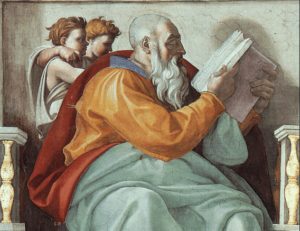
The same peculiarities which have given him fame as a sculptor he carried out into painting, in which he is even more remarkable; for the artists of Italy at this period often combined a skill for all the fine arts. In sculpture they were much indebted to the ancients, but painting seems to have been purely a development. In the Middle Ages it was comparatively rude. No noted painter arose until Cimabue, in the middle of the thirteenth century. Before him, painting was a lifeless imitation of models afforded by Greek workers in mosaics; but Cimabue abandoned this servile copying, and gave a new expression to heads, and grouped his figures. Under Giotto, who was contemporary with Dante, drawing became still more correct, and coloring softer. After him, painting was rapidly advanced. Pietro della Francesca was the father of perspective; Domenico painted in oil, discovered by Van Eyck in Flanders, in 1410; Masaccio studied anatomy; gilding disappeared as a background around pictures. In the fifteenth century the enthusiasm for painting became intense; even monks became painters, and every convent and church and palace was deemed incomplete without pictures. But ideal beauty and harmony in coloring were still wanting, as well as freedom of the pencil. Then arose Da Vinci and Michelangelo, who practised the immutable principles by which art could be advanced; and rapidly following in their steps, Fra Bartolommeo, Fra Angelico, Rossi, and Andrea del Sarto made the age an era in painting, until the art culminated in Raphael and Corregio and Titian. And divers cities of Italy – Bologna, Milan, Parma, and Venice – disputed with Rome and Florence for the empire of art; as also did many other cities which might be mentioned, each of which has a history, each of which is hallowed by poetic associations; so that all men who have lived in Italy, or even visited it, feel a peculiar interest in these cities, an interest which they can feel in no others, even if they be such capitals as London and Paris. I excuse this extravagant admiration for the wonderful masterpieces produced in that age, making marble and canvas eloquent with the most inspiring sentiments, because, wrapt in the joys which they excite, the cultivated and imaginative man forgets – and rejoices that he can forget – the priests and beggars, the dirty hotels, filthy friars, superstition, unthrift, Jesuitism, which stare ordinary tourists in the face, and all the other disgusting realities which philanthropists deplore so loudly in that degenerate but classical and ever-to-be-hallowed land. For, come what will, in spite of popes and despots it has been the scene of the highest glories of antiquity, calling to our minds saints and martyrs, as well as conquerors and emperors, and revealing at every turn their tombs and broken monuments, and all the hoary remnants of unsurpassed magnificence, as well as preserving in churches and palaces those wonders which were created when Italy once again lived in the noble aspiration of making herself the centre and the pride of the new civilization.
Da Vinci, the oldest of the great masters who immortalized that era, died in 1519, in the arms of Francis I of France, and Michelangelo received his mantle. The young sculptor was taken away from his chisel to paint, for Pope Julius II, the ceiling of the Sistine Chapel. After the death of his patron Lorenzo, he had studied and done famous work in marble at Bologna, at Rome, and again at Florence. He had also painted some, and with such immediate success that he had been invited to assist Da Vinci in decorating a hall in the ducal palace at Florence. But sculpture was his chosen art, and when called to paint the Sistine Chapel, he implored the Pope that he might be allowed to finish the mausoleum which he had begun, and that Raphael, then dazzling the whole city by his unprecedented talents, might be substituted for him in that great work. But the Pope was inflexible; and the great artist began his task, assisted by other painters; however, he soon got disgusted with them and sent them away, and worked alone. For twenty months he toiled, rarely seen, living abstemiously, absorbed utterly in his work of creation; and the greater portion of the compartments in the vast ceiling was finished before any other voice than his, except the admiring voice of the Pope, pronounced it good.
It would be useless to attempt to describe those celebrated frescoes. Their subjects were taken from the Book of Genesis, with great figures of sibyls and prophets. They are now half-concealed by the accumulated dust and smoke of three hundred years, and can be surveyed only by reclining at full length on the back. We see enough, however, to be impressed with the boldness, the majesty, and the originality of the figures,–their fidelity to nature, the knowledge of anatomy displayed, and the disdain of inferior arts; especially the noble disdain of appealing to false and perverted taste, as if he painted from an exalted ideal in his own mind, which ideal is ever associated with creative power.
It is this creative power which places Michelangelo at the head of the artists of his great age; and not merely the power to create but the power of realizing the most exalted conceptions. Raphael was doubtless superior to him in grace and beauty, even as Titian afterwards surpassed him in coloring. He delighted, like Dante, in the awful and the terrible. This grandeur of conception was especially seen in his Last Judgment, executed thirty years afterwards, in completion of the Sistine Chapel, the work on which had been suspended at the death of Julius. This vast fresco is nearly seventy feet in height, painted upon the wall at the end of the chapel, as an altar-piece. No subject could have been better adapted to his genius than this – the day of supernal terrors (dies irae, dies illa), when, according to the sentiments of the Middle Ages, the doomed were subjected to every variety of physical suffering, and when this agony of pain, rather than agony of remorse, was expressed in tortured limbs and in faces writhing with demoniacal despair. Such was the variety of tortures which he expressed, showing an unexampled richness in imaginative powers, that people came to see it from the remotest parts of Italy. It made a great sensation, like the appearance of an immortal poem, and was magnificently rewarded; for the painter received a pension of twelve hundred golden crowns a year, a great sum in that age.
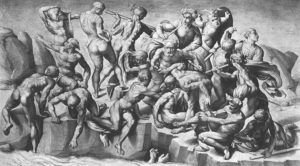
But Michelangelo did not paint many pieces; he confined himself chiefly to cartoons and designs, which, scattered far and wide, were reproduced by other artists. His most famous cartoon was the Battle of Pisa, the one executed for the ducal palace of Florence, as pendant to one by Leonardo da Vinci, then in the height of his fame. This picture was so remarkable for the accuracy of drawing, and the variety and form of expression, that Raphael came to Florence on purpose to study it; and it was the power of giving boldness and dignity and variety to the human figure, as shown in this painting, which constitutes his great originality and transcendent excellence. The great creations of the painters, in modern times as well as in the ancient, are those which represent the human figure in its ideal excellence,–which of course implies what is most perfect, not in any one man or woman, but in men and women collectively. Hence the greatest of painters rarely have stooped to landscape painting, since no imaginary landscape can surpass what everybody has seen in nature. You cannot improve on the colors of the rainbow, or the gilded clouds of sunset, or the shadows of the mountain, or the graceful form of trees, or the varied tints of leaves and flowers; but you can represent the figure of a man or woman more beautiful than any one man or woman that has ever appeared. What mortal woman ever expressed the ethereal beauty depicted in a Madonna of Raphael or Murillo? And what man ever had such a sublimity of aspect and figure as the creations of Michelangelo? Why, “a beggar,” says one of his greatest critics, “arose from his hand the patriarch of poverty; the hump of his dwarf is impressed with dignity; his infants are men, and his men are giants.” And, says another critic, “he is the inventor of epic painting, in that sublime circle of the Sistine Chapel which exhibits the origin, progress, and final dispensation of the theocracy. He has personified motion in the cartoon of Pisa, portrayed meditation in the prophets and sibyls of the Sistine Chapel and in the Last Judgment, traced every attitude which varies the human body, with every passion which sways the human soul.” His supremacy is in the mighty soaring of his intellectual conceptions. Marvelous as a creator, like Shakespeare; profound and solemn, like Dante; representing power even in repose, and giving to the Cyclopean forms which he has called into being a charm of moral excellence which secures our sympathy; a firm believer in a supreme and personal God; disciplined in worldly trials, and glowing in lofty conceptions of justice, he delights in portraying the stern prophets of Israel, surrounded with an atmosphere of holiness, yet breathing compassion on those whom they denounce; august in dignity, yet melting with tenderness; solemn, sad, profound. Thus was his influence pure and exalted in an art which has too often been prostituted to please the perverted taste of a sensual age. The most refined and expressive of all the arts, as it sometimes is, and always should be, is the one which oftenest appeals to that which Christianity teaches us to shun. You may say, “Evil to him who evil thinks,” especially ye pure and immaculate persons who have walked uncorrupted amid the galleries of Paris, Dresden, Florence, and Rome; but I fancy that pictures, like books, are what we choose to make them, and that the more exquisite the art by which vice is divested of its grossness, but not of its subtle poisons, like the New Heloise of Rousseau or the Wilhelm Meister of Goethe, the more fatally will it lead astray by the insidious entrance of an evil spirit in the guise of an angel of light. Art, like literature, is neither good nor evil abstractly, but may become a savor of death unto death, as well as of life unto life. You cannot extinguish it without destroying one of the noblest developments of civilization; but you cannot have civilization without multiplying the temptations of human society, and hence must be guarded from those destructive cankers which, as in old Rome, eat out the virtues on which the strength of man is based. The old apostles, and other great benefactors of the world, attached more value to the truths which elevate than to the arts which soften. It was the noble direction which Michelangelo gave to art which made him a great benefactor not only of civilization, but also of art, by linking with it the eternal ideas of majesty and dignity, as well as the truths which are taught by divine inspiration, another illustration of the profound reverence which the great master minds of the world, like Augustine, Pascal, and Bacon, have ever expressed for the ideas which were revealed by Christianity and the old prophets of Jehovah; ideas which many bright but inferior intellects, in their egotistical arrogance, have sought to subvert.
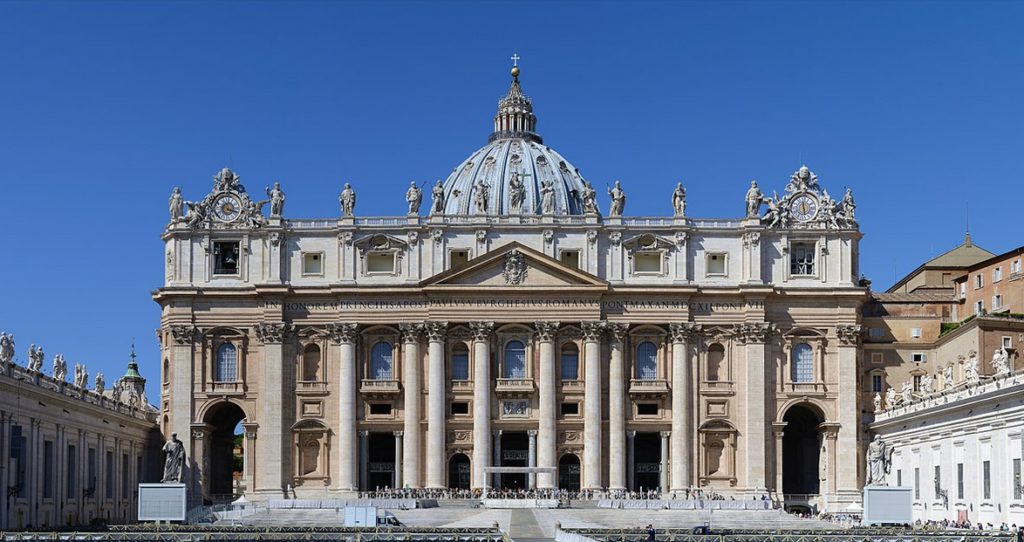
Yet it was neither as sculptor nor painter that Michelangelo left the most enduring influence, but as architect. Painting and sculpture are the exclusive ornaments and possession of the rich and favored. But architecture concerns all men, and most men have something to do with it in the course of their lives. What boots it that a man pays two thousand pounds for a picture to be shut up in his library, and probably more valued for its rarity, or from the caprices of fashion, than for its real merits? But it is something when a nation pays a million for a ridiculous building, without regard to the object for which it is intended, to be observed and criticised by everybody and for succeeding generations. A good picture is the admiration of a few; a magnificent edifice is the pride of thousands. A picture necessarily cultivates the taste of a family circle; a public edifice educates the minds of millions. Even the Moses of Michelangelo is a mere object of interest to those who visit the church of San Pietro in Vincoli; but St. Peter’s is a monument to be seen by large populations from generation to generation. All London contemplates St. Paul’s Church or the Palace of Westminster, but the National Gallery may be visited by a small fraction of the people only once a year. Of the thousands who stand before the Tuileries or the Madeleine not one in a hundred has visited the gallery of the Louvre. What material works of man so grand as those hoary monuments of piety or pride erected three thousand years ago, and still magnificent in their very ruins! How imposing are the pyramids, the Coliseum, and the Gothic cathedrals of the Middle Ages! And even when architecture does not rear vaulted roofs and arches and pinnacles, or tower to dazzling heights, or inspire reverential awe from the associations which cluster around it, how interesting are even its minor triumphs! Who does not stop to admire a beautiful window, or porch, or portico? Who does not criticise his neighbor’s house, its proportions, its general effect, its adaptation to the uses designed? Architecture never wearies us, for its wonders are inexhaustible; they appeal to the common eye, and have reference to the necessities of man, and sometimes express the consecrated sentiments of an age or a nation. Nor can it be prostituted, like painting and sculpture; it never corrupts the mind, and sometimes inspires it; and if it makes an appeal to the senses or the imagination, it is to kindle perceptions of the severe beauty of geometrical forms.
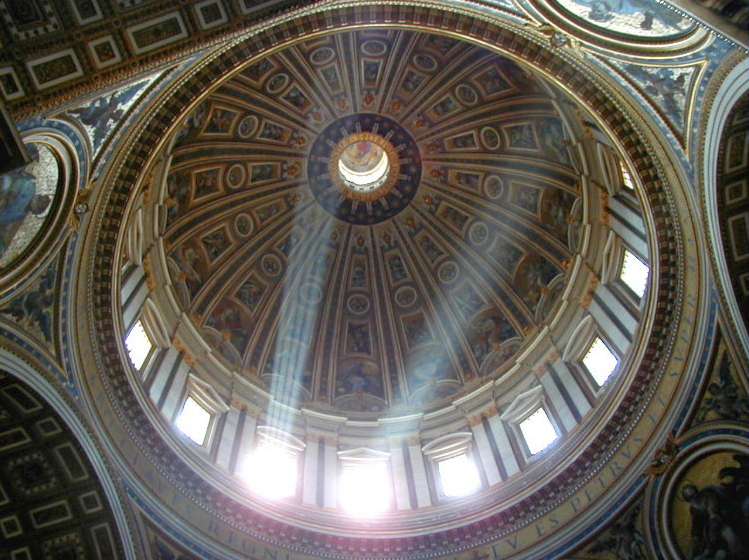
Whoever, then, has done anything in architecture has contributed to the necessities of man, and stimulated an admiration for what is venerable and magnificent. Now Michelangelo was not only the architect of numerous palaces and churches, but also one of the principal architects of that great edifice which is, on the whole, the noblest church in Christendom, a perpetual marvel and study; not faultless, but so imposing that it will long remain, like the old temple of Ephesus, one of the wonders of the world. He completed the church without great deviation from the plan of the first architect, Bramante, whom he regarded as the greatest architect that had lived, altering Bramante’s plans from a Latin to a Greek cross, the former of which was retained after Michael Angelo’s death. But it is the interior, rather than the exterior of St. Peter’s, which shows its vast superiority over all other churches for splendor and effect, and surprises all who are even fresh from Cologne and Milan and Westminster. It impresses us like a wonder of nature rather than as the work of man, a great work of engineering as well as a marvel of majesty and beauty. We are surprised to see so vast a structure, covering nearly five acres, so elaborately finished, nothing neglected; the lofty walls covered with precious marbles, the side chapels filled with statues and monuments, the altars ornamented with pictures,–and those pictures not painted in oil, but copied in mosaic, so that they will neither decay nor fade, but last till destroyed by violence. What feelings overpower the poetic mind when the glories of that interior first blaze upon the brain; what a world of brightness, softness, and richness; what grandeur, solidity, and strength; what unnumbered treasures around the altars; what grand mosaics relieve the height of the wondrous dome, larger than the Pantheon, rising two hundred feet from the intersection of those lofty and massive piers which divide transept from choir and nave; what effect of magnitude after the eye gets accustomed to the vast proportions! Oh, what silence reigns around! How difficult, even for the sonorous chants of choristers and priests to disturb that silence, to be more than echoes of a distant music which seems to come from the very courts of heaven itself: to some a holy sanctuary, where one may meditate among crowds and feel alone; where one breathes an atmosphere which changes not with heat or cold; and where the ever-burning lamps and clouds of incense diffusing the fragrance of the East, and the rich dresses of the mitred priests, and the unnumbered symbols, suggest the ritualism of that imposing worship when Solomon dedicated to Jehovah the grandest temple of antiquity!
Truly was St. Peter’s Church the last great achievement of the popes, the crowning demonstration of their temporal dominion; suggestive of their wealth and power, a marble history of pride and pomp, a fitting emblem of that worship which appeals to sense rather than to God. And singular it was, when the great artist reared that gigantic pile, even though it symbolized the cross, he really gave a vital wound to that cause to which he consecrated his noblest energies; for its lofty dome could not be completed without the contributions of Christendom, and those contributions could not be made without an appeal to false principles which entered into Mediaeval Catholicism, even penance and self-expiation, which stirred the holy indignation of a man who knew and declared on what different ground justification should be based. Thus was Luther, in one sense, called into action by the labors of Michelangelo; thus was the erection of St. Peter’s Church overruled in the preaching of reformers, who would show that the money obtained by the sale of indulgences for sin could never purchase an acceptable offering to God, even though the monument were filled with Christian emblems, and consecrated by those prayers and anthems which had been the life of blessed saints and martyrs for more than a thousand years.
St. Peter’s is not Gothic, it is a restoration of the Greek; it belongs to what artists call the Renaissance, a style of architecture marked by a return to the classical models of antiquity. Michelangelo brought back to civilization the old ideas of Grecian grace and Roman majesty, typical of the original inspirations of the men who lived in the quiet admiration of eternal beauty and grace; the men who built the Parthenon, and who shaped pillars and capitals and entablatures in the severest proportions, and fitted them with ornaments drawn from the living world, plants and animals, especially images of God’s highest work, even of man; and of man not worn and macerated and dismal and monstrous, but of man when most resplendent in the perfections of the primeval strength and beauty. He returned to a style which classical antiquity carried to great perfection, but which had been neglected by the new Teutonic nations.
Nor is there evidence that Michelangelo disdained the creations especially seen in those Gothic monuments which are still the objects of our admiration. Who does not admire the church architecture of the Middle Ages? Of its kind it has never been surpassed. Geometry and art – the true and the beautiful – meet. Nothing ever erected by the hand of man surpasses the more famous cathedrals of the twelfth and thirteenth centuries, in the richness and variety of their symbolic decorations. They typify the great ideas of Christianity; they inspire feelings of awe and reverence; they are astonishing structures, in their magnitude and in their effect. Monuments are they of religious zeal and poetical inspiration, the creations of great artists, although we scarcely know their names; adapted to the uses designed; the expression of consecrated sentiments; the marble history of the ages in which they were erected, now heavy and sombre when society was enslaved and mournful; and then cheerful and lofty when Christianity was joyful and triumphant. Who ever was satisfied in contemplating the diversified wonders of those venerable structures? Who would lose the impression which almost overwhelmed the mind when York minster, or Cologne, or Milan, or Amiens was first beheld, with their lofty spires and towers, their sculptured pinnacles, their flying buttresses, their vaulted roofs, their long arcades, their purple windows, their holy altars, their symbolic carvings, their majestic outlines, their grand proportions! But beautiful, imposing, poetical, and venerable as are these hoary piles, they are not the all in all of art. Suppose all the buildings of Europe the last four hundred years had been modelled from these churches, how gloomy would be our streets, how dark and dingy our shops, how dismal our dwellings, how inconvenient our hotels! A new style was needed, at least as a supplement of the old, as lances and shields were giving place to fire-arms, and the line and the plummet for the mariner’s compass; as a new civilization was creating new wants and developing the material necessities of man. So Michelangelo arose, and revived the imperishable models of the classical ages, to be applied not merely to churches but to palaces, civic halls, theatres, libraries, museums, banks, all of which have mundane purposes. The material world had need of conveniences, as much as the Mediaeval age had need of shrines. Humanity was to be developed as well as the Deity to be worshiped. The artist took the broadest views, looking upon Gothic architecture as but one division of art, even as truth is greater than any system, and Christianity wider than any sect. O, how this Shakespeare of art would have smiled on the vague and transcendental panegyrics of Michelet or Ruskin, and other sentimental admirers of an age which never can return! And how he might have laughed at some modern enthusiasts, who trace religion to the disposition of stones and arches, forgetting that religion is an inspiration which comes from God, and never from the work of man’s hands, which can be only a form of idolatry.
Michelangelo found that the ornamentations of the ancient temples were as rich and varied as those of Mediaeval churches. Mouldings were discovered of incomparable elegance; the figures on entablatures were found to be chiselled accurately from nature; the pillars were of matchless proportions, the capitals of graceful curvatures. He saw beauty in the horizontal lines of the Parthenon, as much as in the vertical lines of Cologne. He would not pull down the venerable monuments of religious zeal, but he would add to them. “Because the pointed arch was sacred, he would not despise the humble office of the lintel.” And in southern climates especially there was no need of those steep Gothic roofs which were intended to prevent a great weight of rain and snow, and where the graceful portico of the Greeks was more appropriate than the heavy tower of the Lombards. He would seize on everything that the genius of past ages had indorsed, even as Christianity itself appropriates everything human,–science, art, music, poetry, eloquence, literature,–sanctifies it, and dedicates it to the Lord; not for the pride of priests, but for the improvement of humanity. Civilization may exist with Paganism, but only performs its highest uses when tributary to Christianity. And Christianity accepts the tribute which even Pagan civilization offers for the adornment of our race, expelled from Paradise, and doomed to hard and bitter toils, without abdicating her more glorious office of raising the soul to heaven.
Nor was Michelangelo responsible for the vile mongrel architecture which followed the Renaissance, and which disfigures the modern capitals of Europe, any more than for the perversion of painting in the hands of Titian. But the indiscriminate adoption of pillars for humble houses, shops with Roman arches, spires and towers erected on Grecian porticoes, are no worse than schoolhouses built like convents, and chapels designed for preaching as much as for choral chants made dark and gloomy, where the voice of the preacher is lost and wasted amid vaulted roofs and useless pillars. Michelangelo encouraged no incongruities; he himself conceived the beautiful and the true, and admired it wherever found, even amid the excavations of ruined cities. He may have overrated the buried monuments of ancient art, but how was he to escape the universal enthusiasm of his age for the remains of a glorious and forgotten civilization? Perhaps his mind was wearied with the Middle Ages, from which he had nothing more to learn, and sought a greater fullness and a more perfect unity in the expanding forces of a new and grander era than was ever seen by Pagan heroes or by Gothic saints.
But I need not expatiate on the new ideas which Michelangelo accepted, or the impulse he gave to art in all its forms, and to the revival of which civilization is so much indebted. Let us turn and give a parting look at the man, that great creative genius who had no superior in his day and generation. Like the greatest of all Italians, he is interesting for his grave experiences, his dreary isolations, his vast attainments, his creative imagination, and his lofty moral sentiments. Like Dante, he stands apart from, and superior to, all other men of his age. He never could sport with jesters, or laugh with buffoons, or chat with fools; and because of this he seemed to be haughty and disdainful. Like Luther, he had no time for frivolities, and looked upon himself as commissioned to do important work. He rejoiced in labor, and knew no rest until he was eighty-nine. He ate that he might live, not lived that he might eat. For seventeen years after he was seventy-two he worked on St. Peter’s church; worked without pay, that he might render to God his last earthly tribute without alloy, as religious as those unknown artists who erected Rheims and Westminster. He was modest and patient, yet could not submit to the insolence of little men in power. He even left the papal palace in disdain when he found his labors unappreciated. Julius II was forced to bend to the stern artist, not the artist to the Pope. Yet when Leo X sent him to quarry marbles for nine years, he submitted without complaint. He had no craving for riches like Rubens, no love of luxury like Raphael, no envy like Da Vinci. He never over-tasked his brain, or suffered himself, like Raphael, who died exhausted at thirty-seven, to crowd three days into one, knowing that over-work exhausts the nervous energies and shortens life. He never attempted to open the doors which Providence had plainly shut against him, but waited patiently for his day, knowing it would come; yet whether it came or not, it was all the same to him, a man with all the holy rapture of a Kepler, and all the glorious self-reliance of a Newton. He was indeed jealous of his fame, but he was not greedy of admiration. He worked without the stimulus of praise – one of the rarest things – urged on purely by love of art. He loved art for its own sake, as good men love virtue, as Palestrina loved music, as Bacon loved truth, as Kant loved philosophy, satisfied with itself as its own reward. He disliked to be patronized, but always remembered benefits, and loved the tribute of respect and admiration, even as he scorned the empty flatterer of fashion. He was the soul of sincerity as well as of magnanimity; and hence had great capacity for friendship, as well as great power of self-sacrifice His friendship with Vittoria Colonna is as memorable as that of Jerome and Paula, or that of Hildebrand and the Countess Matilda. He was a great patriot, and clung to his native Florence with peculiar affection. Living in habits of intimacy with princes and cardinals, he never addressed them in adulatory language, but talked and acted like a nobleman of nature, whose inborn and superior greatness could be tested only by the ages. He placed art on the highest pinnacle of the temple of humanity, but dedicated that temple to the God of heaven in whom he believed. His person was not commanding, but intelligence radiated from his features, and his earnest nature commanded respect. In childhood he was feeble, but temperance made him strong. He believed that no bodily decay was incompatible with intellectual improvement. He continued his studies until he died, and felt that he had mastered nothing. He was always dissatisfied with his own productions. Excelsior was his motto, as Alp on Alp arose upon his view. His studies were diversified and vast. He wrote poetry as well as carved stone, his sonnets especially holding a high rank. He was engineer as well as architect, and fortified Florence against her enemies. When old he showed all the fire of youth, and his eye, like that of Moses, never became dim, since his strength and his beauty were of the soul, ever expanding, ever adoring. His temper was stern, but affectionate. He had no mercy on a fool or a dunce, and turned in disgust from those who loved trifles and lies. He was guilty of no immoralities like Raphael and Titian, being universally venerated for his stern integrity and allegiance to duty, as one who believes that there really is a God to whom he is personally responsible. He gave away his riches, like Ambrose and Gregory, valuing money only as a means of usefulness. Sickened with the world, he still labored for the world, and died in 1564, over eighty-nine years of age, in the full assurance of eternal blessedness in heaven.
His marbles may crumble down, in spite of all that we can do to preserve them as models of hopeless imitation; but the exalted ideas he sought to represent by them, are imperishable and divine, and will be subjects of contemplation when
“Seas shall waste, the skies to smoke decay,
Rocks fall to dust, and mountains melt away.”

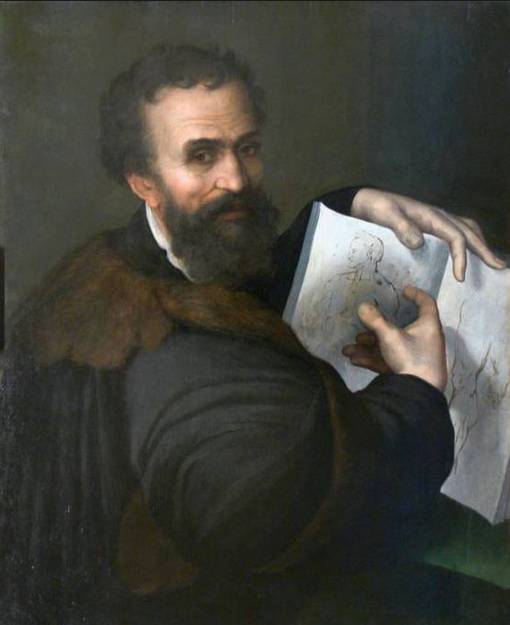


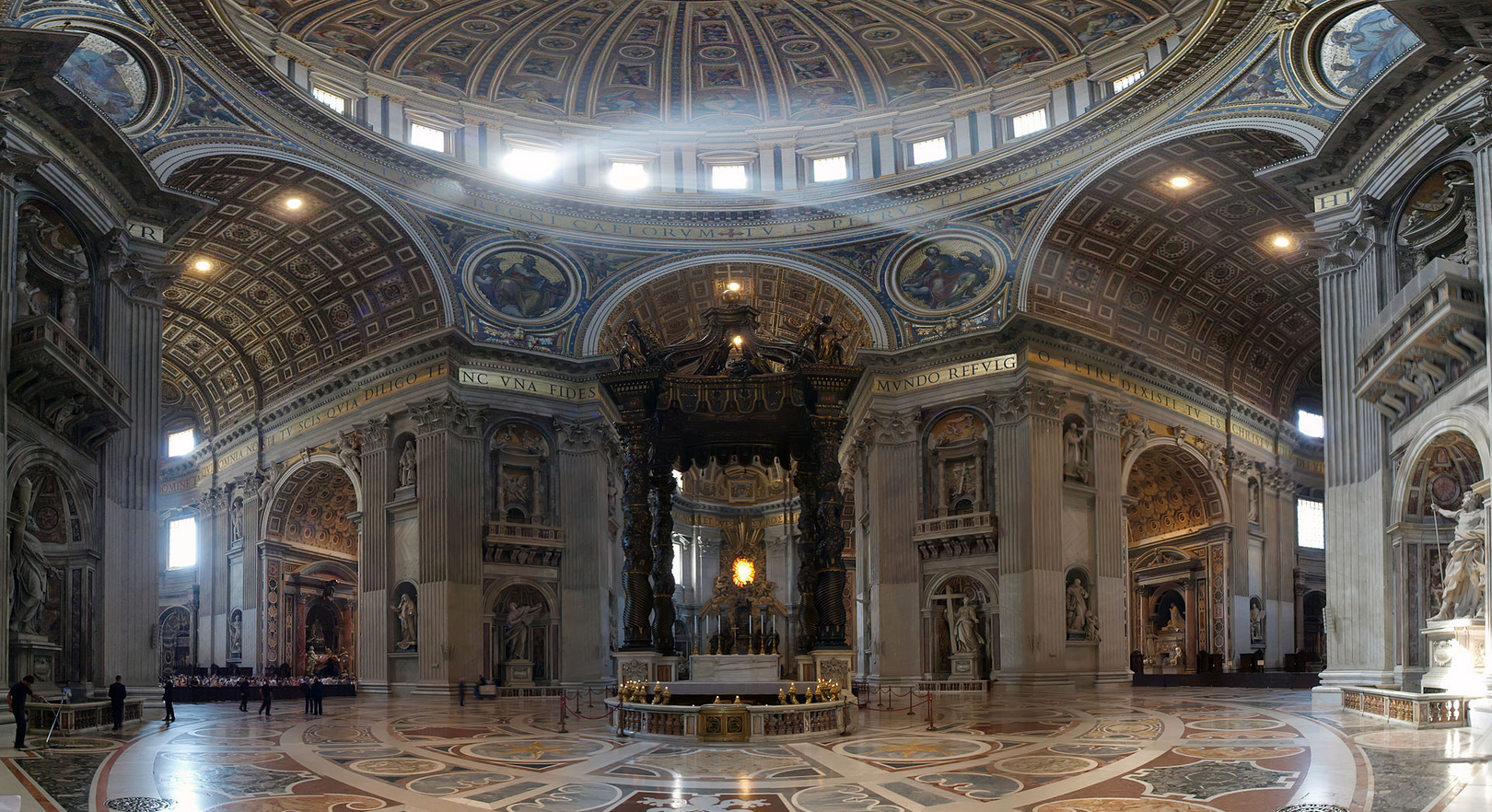
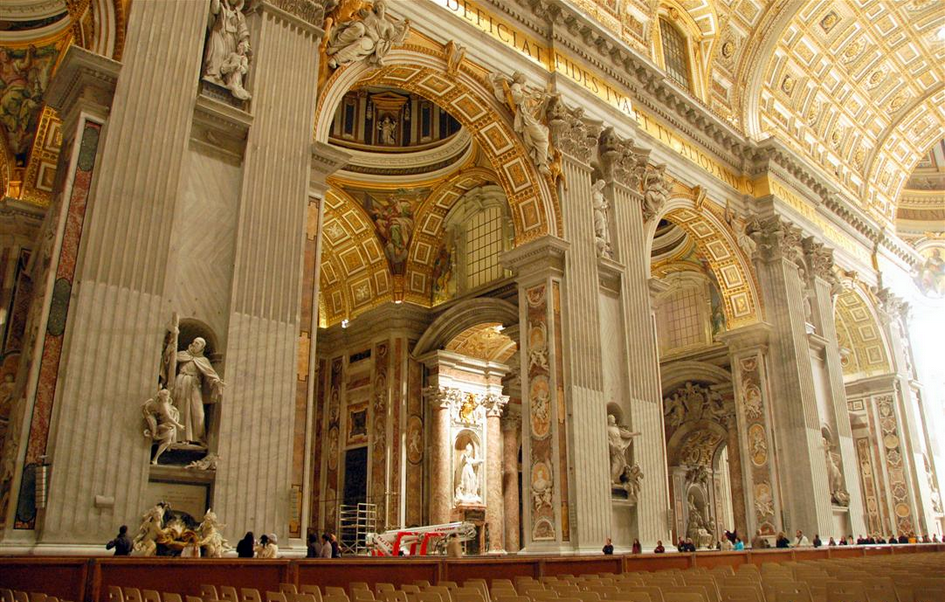
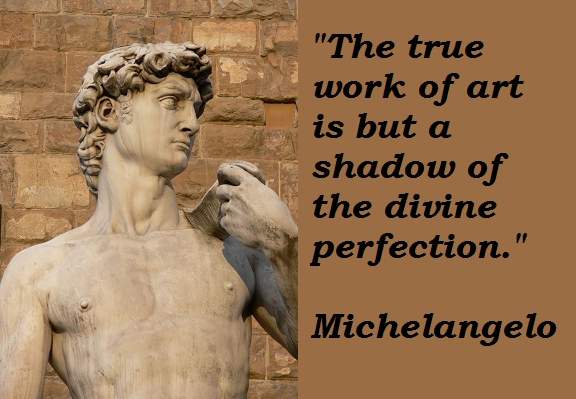





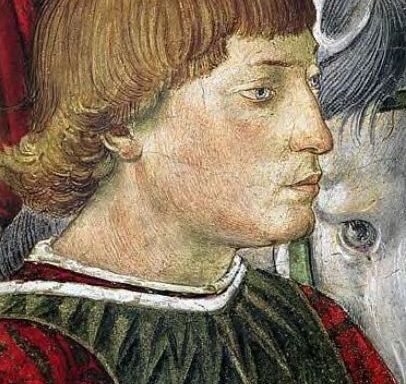
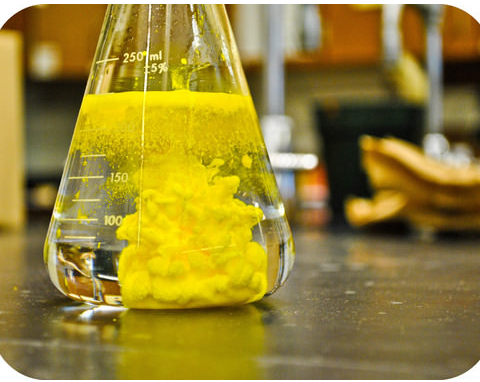

[…] Source link […]